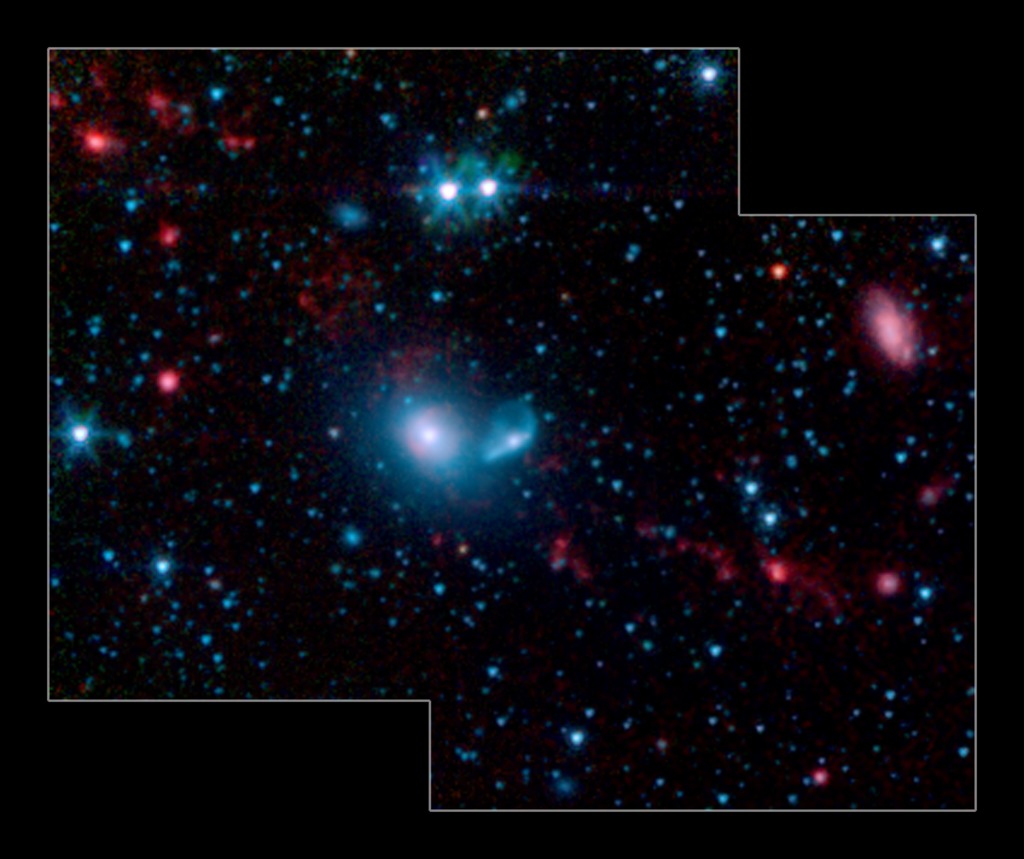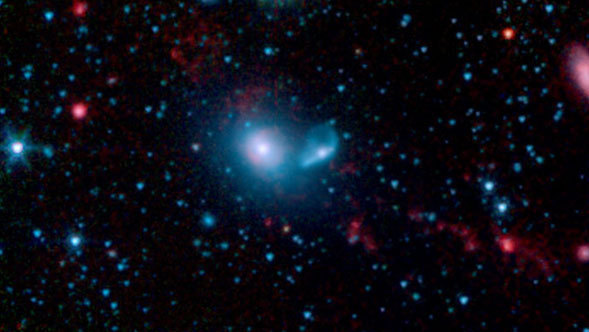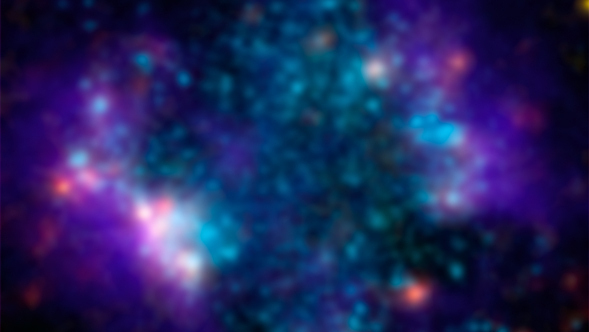
Credit: NASA/JPL-Caltech/S. J. U. Higdon (Cornell University)
Observation • November 22nd, 2005 • sig05-021
sig05-021
This infrared image from NASA's Spitzer Space Telescope shows little "dwarf galaxies" forming in the "tails" of two larger galaxies that are colliding together. The big galaxies are at the center of the picture, while the dwarfs can be seen as red dots in the red streamers, or tidal tails. The two blue dots above the big galaxies are stars in the foreground.
Galaxy mergers are common occurrences in the universe; for example, our own Milky Way galaxy will eventually smash into the nearby Andromeda galaxy. When two galaxies meet, they tend to rip each other apart, leaving a trail, called a tidal tail, of gas and dust in their wake. It is out of this galactic debris that new dwarf galaxies are born.
The new Spitzer picture demonstrates that these particular dwarfs are actively forming stars. The red color indicates the presence of dust produced in star-forming regions, including organic molecules called polycyclic aromatic hydrocarbons, or PAHs. PAHs are also found on Earth, in car exhaust and on burnt toast, among other places. Here, the PAHs are being heated up by the young stars, and, as a result, shine in infrared light.
This image was taken by the infrared array camera on Spitzer. It is a 4-color composite of infrared light, showing emissions from wavelengths of 3.6 microns (blue), 4.5 microns (green), 5.8 microns (orange), and 8.0 microns (red). Starlight has been subtracted from the orange and red channels in order to enhance the dust, or PAH, features.
About the Object
- Name
- NGC 5291
- Type
- Galaxy > Type > Interacting
- Galaxy > Size > Dwarf
- Galaxy > Activity > Starburst
- Distance
- 200,000,000 Light Years
- Redshift
- 0.014602
Color Mapping
| Band | Wavelength | Telescope |
| Infrared | 3.6 µm | Spitzer IRAC |
| Infrared | 4.5 µm | Spitzer IRAC |
| Infrared | 8.0 µm | Spitzer IRAC |
Astrometrics
- Position (J2000)
- RA =13h 47m 22.8s
- Dec = -30° 25' 0.6"
- Field of View
- 8.5 x 7.1 arcminutes
- Orientation
- North is 62.5° left of vertical






